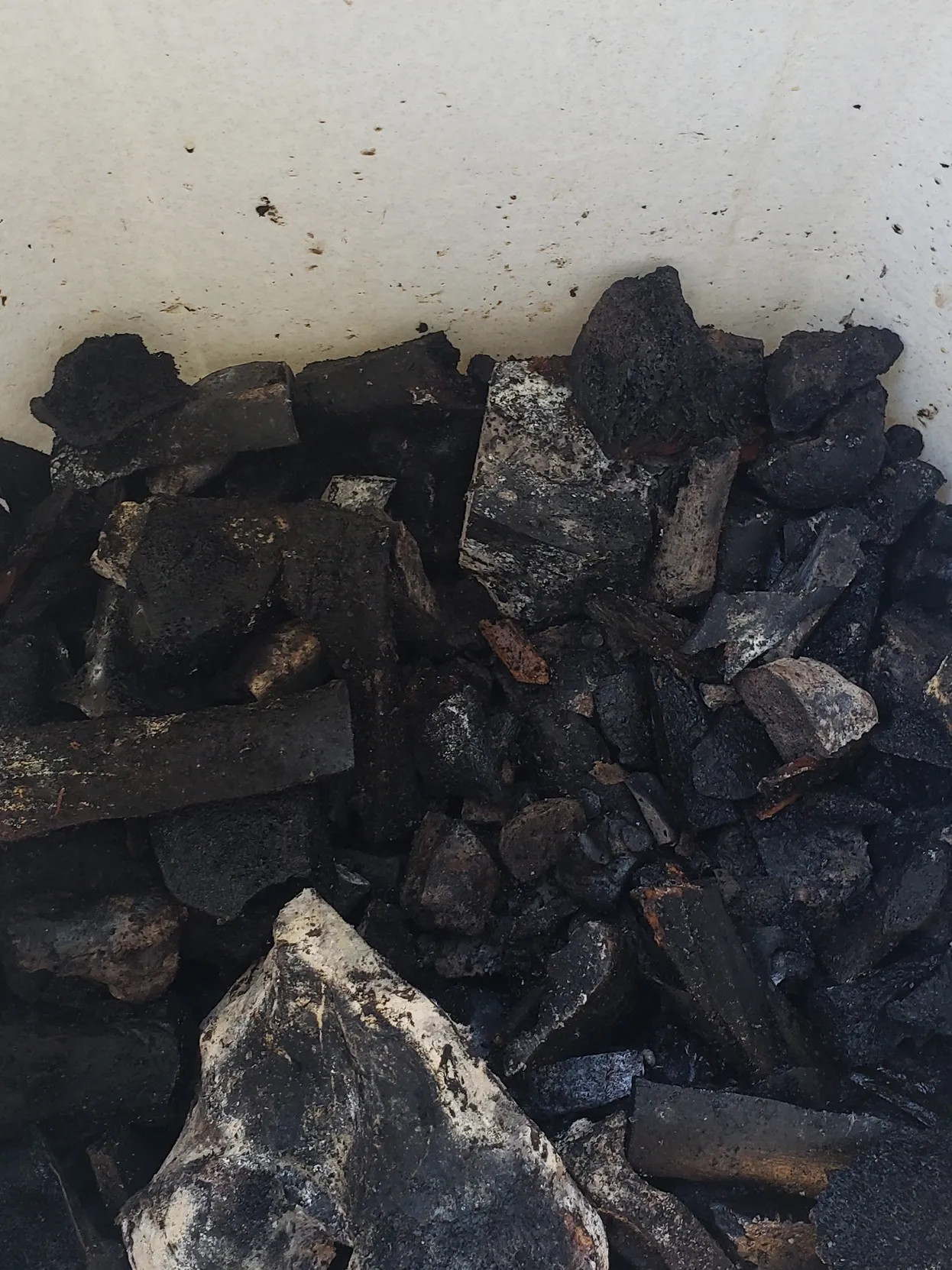Water-Soluble Calcium Phosphate
Calcium phosphate is a combination of calcium and phosphate ions, vital minerals essential for various biological processes and crucial for plant growth. When in a water-soluble form, this compound can be easily taken up by plants through their root systems. It serves as a source of both calcium and phosphorus, offering essential nutrients for plant development, cell structure, and overall health. This solubility enables efficient uptake by plants, aiding in their growth, root development, and overall nutrient balance.
Use 4 mL per gal during the change over stage (the last week of veg and first (maybe second) week of flower).
Ingredients and Materials
– Charred bones
– Unfiltered Vinegar
– Bioreactor to char bones
– Large container to do reaction in
– Strainer
– Collection vessel
When sourcing bones look for bones from large animals like cows and pigs or go into the woods and look for deer bones. Do not use hollow bones like bird bones.
If getting bones from a butcher or farmer, make sure to boil off any remaining flesh so you have just completely clean bones. Then set the clean bones outside to dry and sun bleach for a few months, I like to put the bones inside an old bottomless dog cage so animals cant get to them but the bones are still in direct contact with the ground. A benefit to finding bones in nature, depending on how fresh or decomposed, most the flesh should be cleaned off by bugs and microbial life and be sun bleached dry already.
When bones are nice and dry they need to be made into biochar. Refer to our blog “Making A Biochar Reactor” to learn how to build a small one from two metal buckets.
Once biochar reactor is made add wood to the bottom bucket then add equal parts bones to the top bucket. Light fire under reactor and let burn through all the wood at in the bottom. The flames will pass through the top bucket charring all the bones. When wood is all burnt up the bones are done. The bones should break apart easily and be mostly black with some remaining brown but not white. All white is an indicator of using to much wood and burning to long.
The rest of the process is just like making WCA except you do not need to pour vinegar in slowly. The bones do not react the same way to vinegar as egg shell or coral does.
1. Mix bones and vinegar 1:10 in a glass container
2. Cover with cloth or breathable paper
3. Allow vinegar to react on the bones for 14 days.
4. Strain all solids and collect liquid.
5. Store in glass container and label WCAP with the date it was made.

